A total solar eclipse is coming. How is this one different than the 2017 eclipse?
On April 8, the total solar eclipse will wow tens of millions of people. Here's why it stacks up to an even more impressive event than the 2017 eclipse.
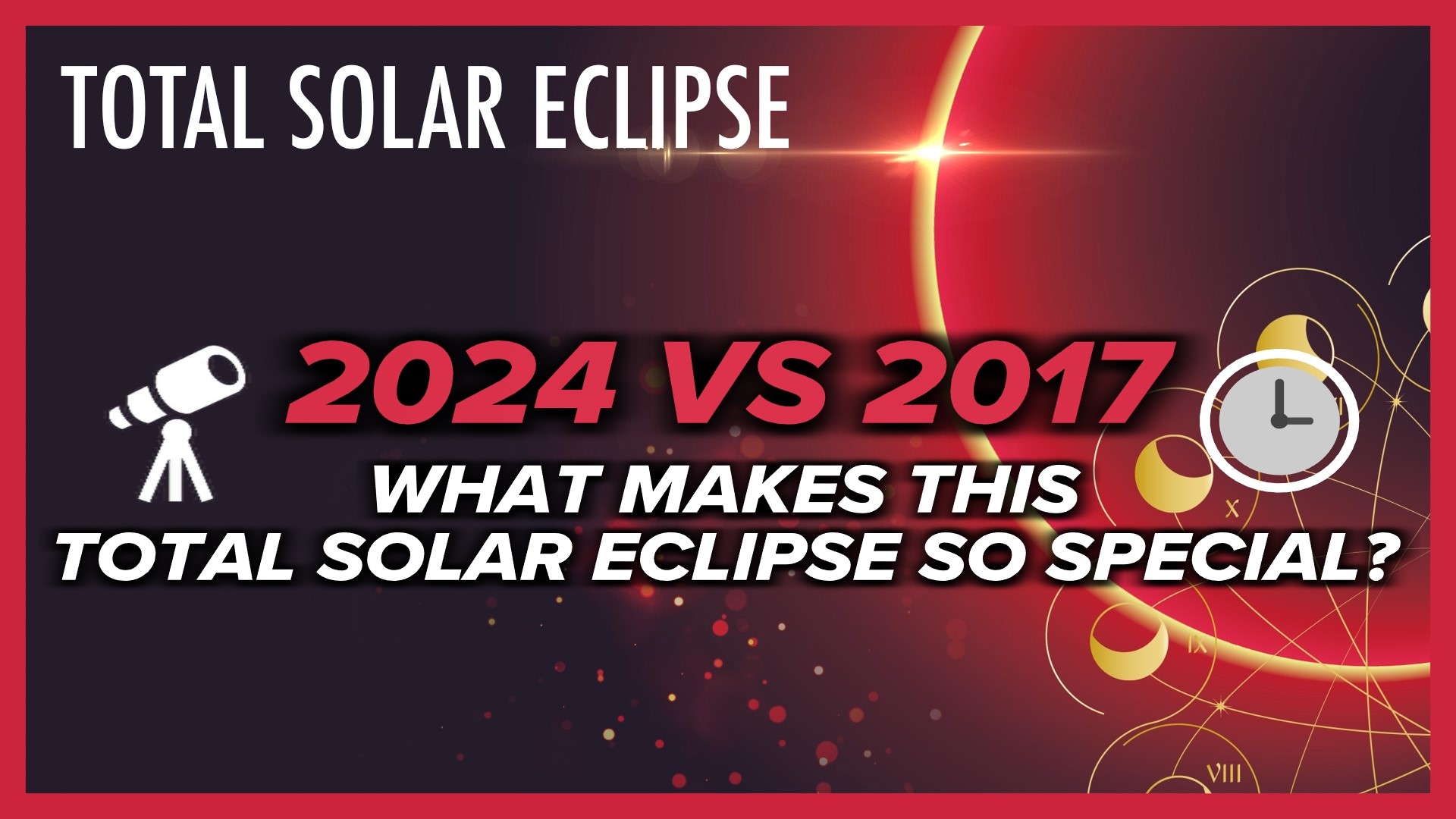
In just over two months, the 2024 total solar eclipse will dazzle audiences across North America with a once-in-a-lifetime astronomical experience. You may recall the 2017 eclipse, which is often labelled the "Great American Eclipse."
While the 2017 eclipse allowed 12 million Americans the opportunity to view totality as the moon's shadow fully obscured the sun, the upcoming 2024 eclipse will provide an even better show here at home and across much of the continent. The 2024 total solar eclipse will put on an even more incredible show due to its impact, duration, and solar activity. Read below to find out why you should be excited for the 2024 total solar eclipse.
Impact How many people are in the path?
In 2017, 12 million Americans witnessed the eclipse from the path of totality stretching from Oregon to South Carolina. While this northwest to southeast path provided millions of Americans with a once-in-a-lifetime opportunity, many missed out on the path of totality, including Ohio and Michigan.
While a partial eclipse is certainly a rare treat, the total eclipse of 2024 will envelop most of northwest Ohio in darkness during the afternoon of April 8. Additionally, many major metropolitan areas across the continent will share in this unique experience.
In 2024, 32 million will fall within the patch of totality, over two and a half times the population that enjoyed the total solar eclipse in 2017. This widespread impact will make the 2024 total solar eclipse an even bigger nationwide story.

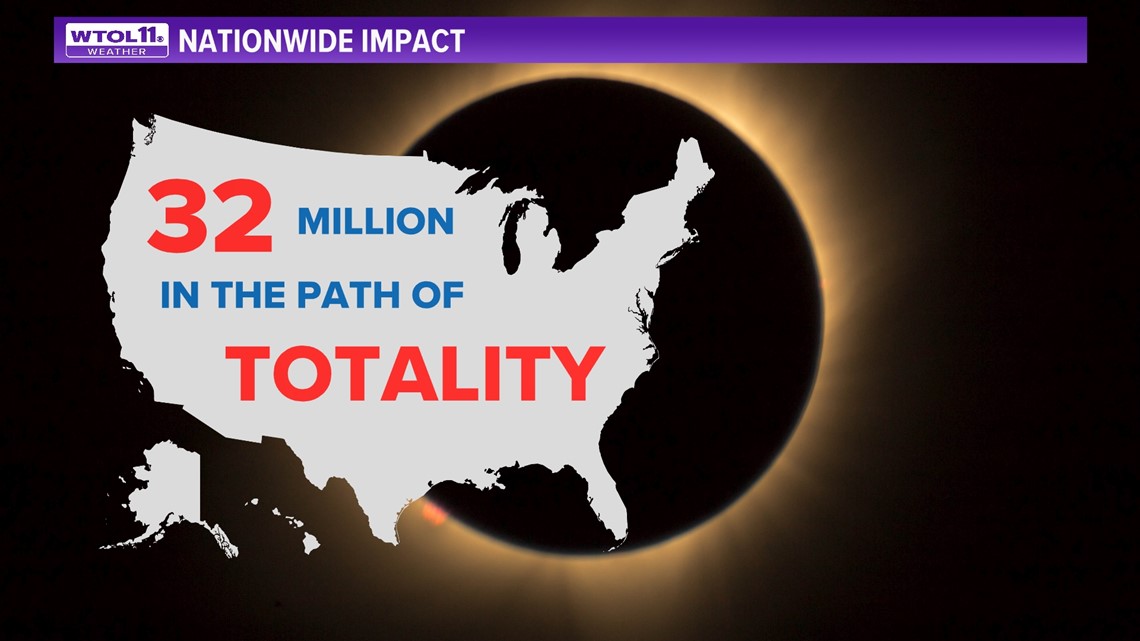
The 2024 path of totally will span a much wider range due to the closer proximity of the Earth to the moon. The width of the 2024 eclipse path will range from 108 to 122 miles compared to 62 to 71 miles in 2017. This broader geographic region will enable more Americans to witness totality.
Furthermore, the southwest to northeast orientation of the path of totality will include many major cities in North America. Montréal, San Antonio, and Dallas, all of which are home to populations well over one million, are the three largest cities in the path of totality.

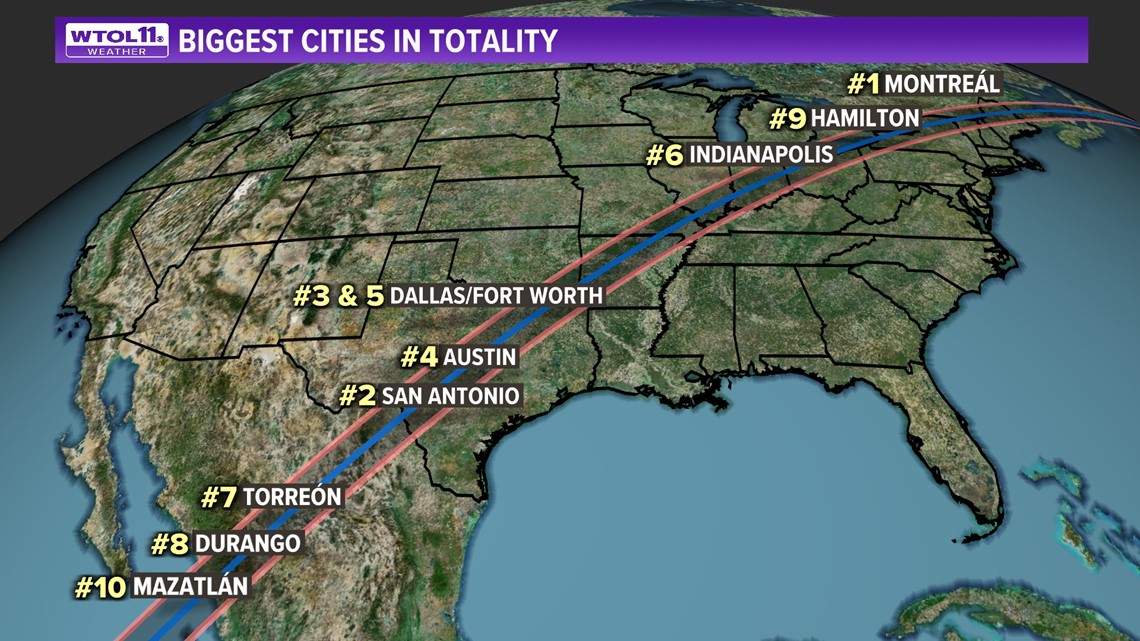
HAVE ECLIPSE QUESTIONS? WE ANSWER THEM HERE: Total solar eclipse 2024 guide
Other sizeable Texas cities such as Austin and Fort Worth will also witness totality. Large Midwest cities will also enjoy the total eclipse, including Indianapolis (population over 882,000) and Cleveland (population over 372,000).
The 2024 path of totality, stretching from Mexico to Maine, will provide over 32 million the opportunity to witness the total solar eclipse. This graphic shows the biggest cities within the path of totality. The broader impact of the 2024 total solar eclipse will truly make it a nationwide spectacle far exceeding 2017.


Duration How long will the eclipse last?
Not only will the 2024 total solar eclipse impact more people, it will last considerably longer. The 2017 eclipse provided a peak viewing time of less than three minutes; Carbondale, Illinois, the "sweet spot" for eclipse viewing, experienced only 2 minutes and 42 seconds of darkness.
The 2024 eclipse will provide up to four and a half minutes of totality; Torreón, Mexico will see the longest show this time around. Even Carbondale will witness over four minutes of totality in 2024, well over 50% longer than 2017.
For parts of northwest Ohio, the 2024 total solar eclipse will bring close to four minutes in totality. This graphic shows the time in totality along with the start and end times of the eclipse for several local cities.

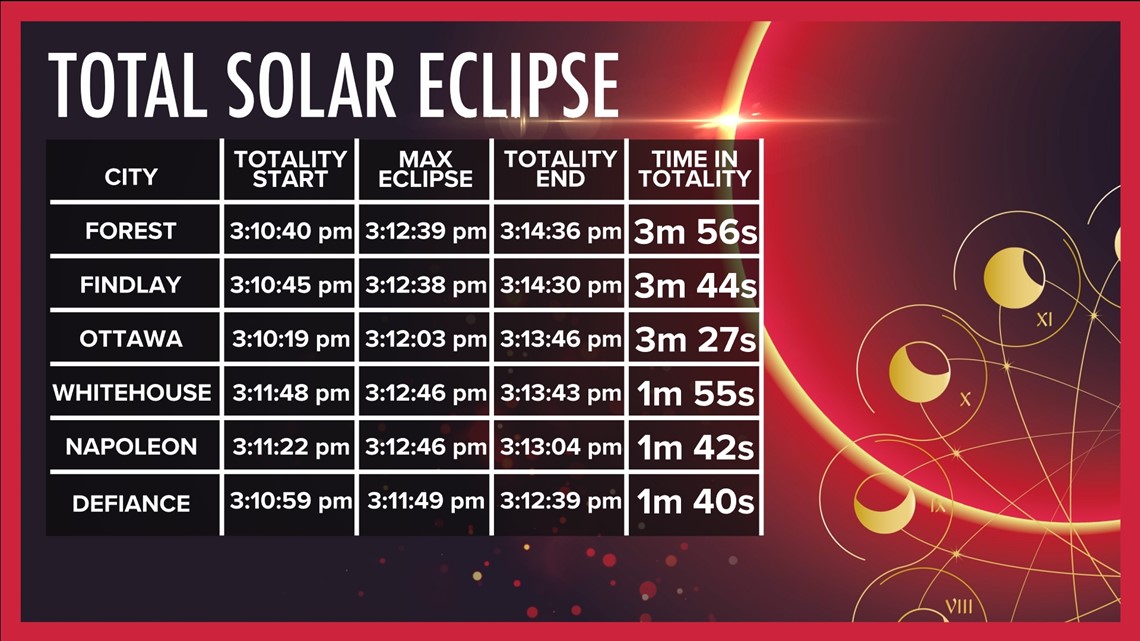
Forest, Ohio will spend the greatest time in totality with 3 minutes and 56 seconds of darkness. Other cities southeast of the Maumee River such as Findlay and Ottawa will witness well over three minutes of totality.
Cities west of Toledo like Napoleon and Defiance will see closer to one minute and 40 seconds of totality. The Toledo metro will fall under the darkness of totality for one minute and 51 seconds. Compared to 2017, which only brought a partial eclipse to our region, 2024 will provide much better viewing for a longer duration.
Even with the longer-lasting total solar eclipse, you'll want to enjoy every second, as those couple minutes will race by. The eclipse will cross over the entire Buckeye State in just seven minutes and 26 seconds from start to finish. Toledo, Cleveland, and Dayton will all share in this experience of viewing totality.
Solar activity How do solar flares impact the experience?
Lastly, the 2024 eclipse will exceed the spectacle of 2017 due to increased solar activity that could enable the viewing of rare solar flares. The sun's magnetic field flips every 11 years or so, signaling a change in solar activity. 2017 occurred close to a solar minimum, associated with less activity in the sun's atmosphere. The 2024 eclipse will coincide with a solar maximum, representative of much great magnetic activity.
While viewers of the 2017 eclipse could see the sun's corona, or outermost layer of its atmosphere, they could not view any solar flares associated with greater magnetic activity. The solar maximum of 2024 will provide the rare opportunity to view solar flares, or magnetic ejections from the sun's atmosphere.


These flares will extend outward from the sun's corona, resembling strands of yarn projecting outward from the main ball. Solar flares could contribute to an asymmetrical, tangled appearance rather than a uniform, spherical look as in 2017.
While these solar flares are relatively difficult to safely observe during broad daylight, they are much more pronounced during the darkness of totality. You may see a few coronal mass ejections protruding outward from the sun this April due to increased solar activity.
Safely viewing the eclipse with proper protective eyewear is paramount, and the WTOL 11 weather team has information regarding the best eclipse glasses and viewing methods. Stay with WTOL 11 for more information and updates regarding eclipse glasses.
In summary, the 2024 total solar eclipse will provide an even more spectacular spectacle due to increased magnetic activity in the sun's atmosphere.
ECLIPSE EVENTS, PARTIES: LIST: Total solar eclipse events in northwest Ohio
Once-in-a-lifetime Stay with WTOL 11 for all eclipse content and information
While the 2017 total solar eclipse is often described as the "Great American Eclipse", 2024 will offer an even more breathtaking once-in-a-lifetime viewing opportunity. Due to its impact, duration, and solar activity, the total solar eclipse of 2024 will provide a rare opportunity for tens of millions of Americans to view several minutes of totality in addition to the visual byproduct of solar magnetic activity.

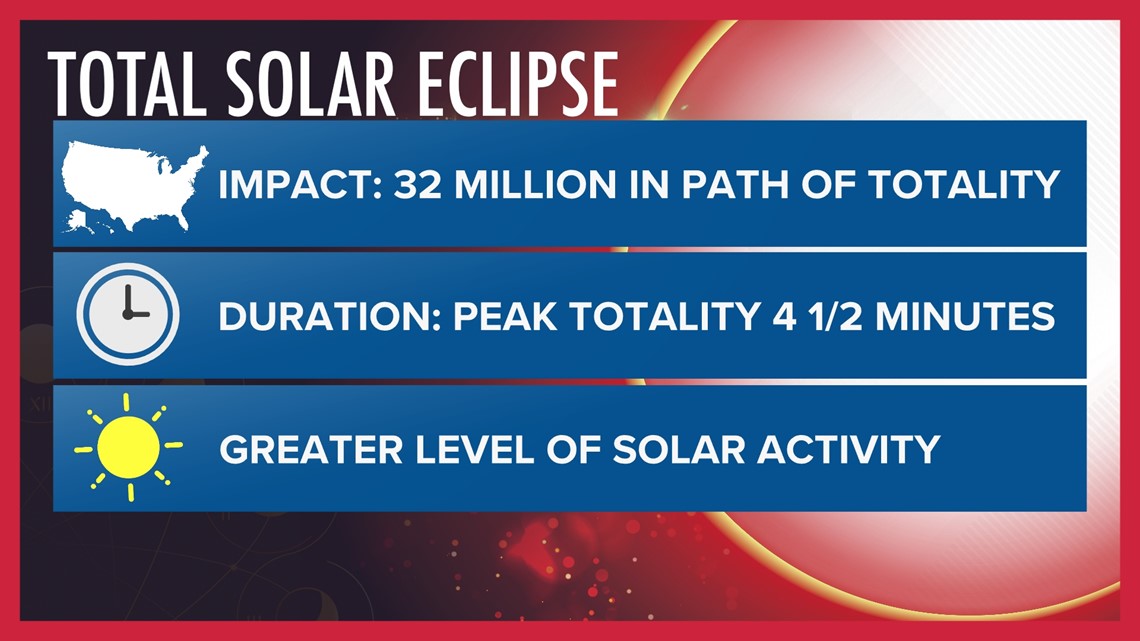
Now that February is here, Meteorologist John Burchfield will share unique eclipse-related information in the Climate Friday Newsletter every week.
You can trust the WTOL 11 weather team for the latest information preparing you for the 2024 total solar eclipse.
WATCH MORE FROM WTOL 11 TOTAL SOLAR ECLIPSE COVERAGE

